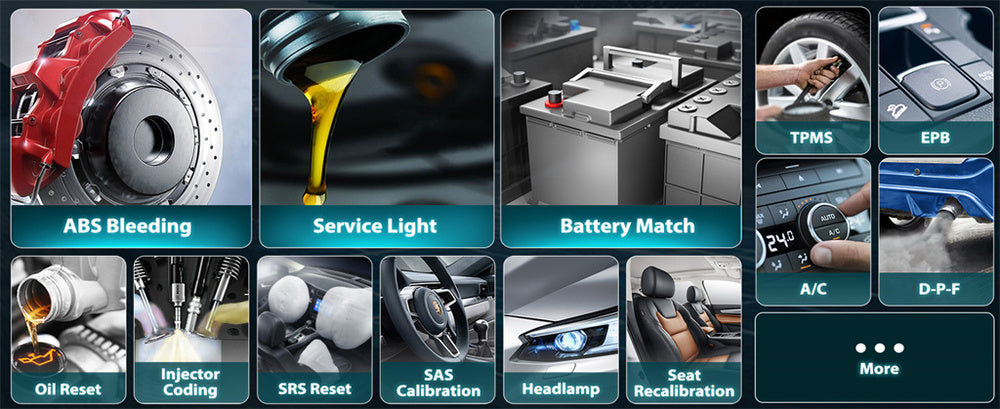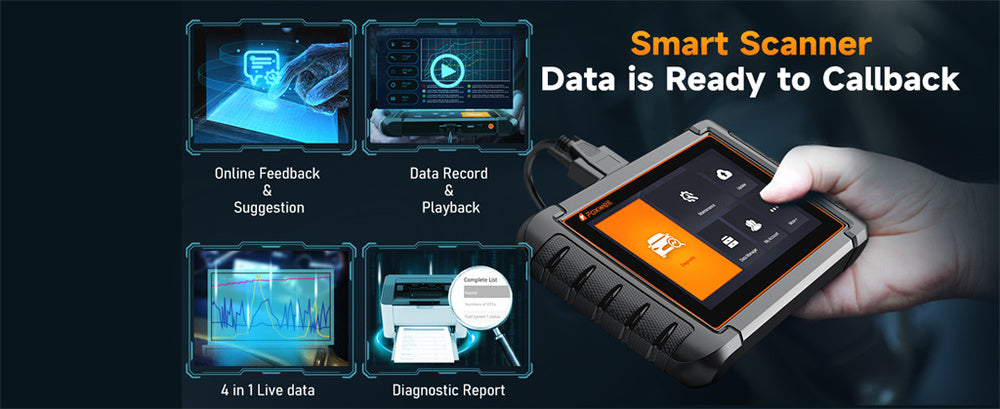Absolutely, an car diagnostic scanner can detect engine misfires, but let’s break down how it does this and what it means for you. When your car’s engine misfires, it’s basically skipping a beat.
This happens when one or more cylinders don’t ignite the air-fuel mixture at the right time.
It can lead to all sorts of issues—like rough idling, poor acceleration, and a dip in fuel efficiency.
The OBD2 system in your car is like a vigilant watchman. It’s constantly monitoring what’s happening under the hood.
When it senses a misfire, it triggers that annoying check engine light and stores a trouble code that you can read with an OBD2 scanner.
Now, keep in mind, the scanner isn’t doing the detecting itself. It’s just reading the codes your car’s computer has already logged.
But these codes can be your first big clue in figuring out what’s wrong.
Understanding Misfire-Related Trouble Codes

When your car misfires, it logs specific trouble codes in the system, typically in the P0300 series. These codes help pinpoint the issue:
P0300 indicates a random or multiple cylinder misfire. This code means that the misfire isn’t isolated to a single cylinder and might be affecting several cylinders at once.
P0301 to P0308 are more specific. Each of these codes corresponds to a particular cylinder misfire. For instance, P0301 refers to a misfire in cylinder 1, while P0302 refers to a misfire in cylinder 2, and so forth.
These codes give you a clear starting point for diagnosing which part of the engine is acting up.
However, identifying the specific cylinder is just the first step; understanding why it’s misfiring is key to fixing the problem.
Common Symptoms and Causes of Engine Misfires

Before diving into the diagnostics, it’s helpful to know what misfire symptoms might look or feel like.
Common signs include:
Rough Idle: If your car feels like it’s vibrating or shaking when it’s idling, that’s a classic sign of a misfire.
Loss of Power: You might notice your car struggling to accelerate or maintain speed, especially when going uphill.
Increased Fuel Consumption: Misfires can make your engine run inefficiently, which means more trips to the gas station.
Check Engine Light: Of course, if the check engine light comes on, that’s your car’s way of telling you something’s wrong, and a misfire could be the culprit.
Understanding what causes these misfires is the next step. Common culprits include:
Worn Spark Plugs: If the spark plugs are old or dirty, they might not be firing as they should, leading to misfires.
Faulty Ignition Coils: The ignition coil sends the necessary voltage to the spark plugs. If it’s faulty, the spark won’t be strong enough to ignite the fuel-air mixture.
Fuel System Issues: Problems like clogged fuel injectors or a weak fuel pump can prevent the engine from getting the proper amount of fuel.
Vacuum Leaks: A leak in the vacuum system can cause an imbalance in the air-fuel ratio, leading to misfires.
Compression Issues: If there’s low compression in one of the cylinders, due to worn piston rings or a bad valve, it won’t fire properly.
How to Use an OBD2 Scanner to Diagnose Misfires
Diagnosing engine misfires with an OBD2 scanner, such as the FOXWELL NT809BT, is pretty straightforward, even if you’re not a seasoned mechanic. Here’s how you can do it:
- Plug In the Scanner: Start by locating the OBD2 port under your dashboard and plugging in your scanner. The FOXWELL NT809BT connects wirelessly, so you can link it to your phone or tablet via Bluetooth, making it easy to move around as you work.
- Turn On the Vehicle: With the scanner connected, turn on your car’s ignition. The scanner will start communicating with your vehicle’s onboard computer, ready to pull any stored trouble codes.
- Run a Diagnostic Scan: Navigate through the scanner’s menu to find the option to “Read Codes” or “Scan for Errors.” The scanner will retrieve any misfire-related trouble codes, such as those in the P0300 series.
- Interpret the Codes: If you see a code like P0301, it means that cylinder 1 is misfiring. The FOXWELL NT809BT will provide detailed explanations for each code, helping you understand what might be causing the problem.
- Check Live Data: For a more in-depth diagnosis, use the scanner’s live data feature to monitor the engine’s performance in real time. This can include things like fuel trim, O2 sensor readings, and ignition timing. Anomalies in these readings can point you toward the root cause of the misfire.
- Conduct Specific Tests: If needed, you can use the scanner to run specific diagnostic tests, such as checking the operation of the ignition coils or fuel injectors. This can help confirm whether a particular component is at fault.
- Save the Diagnostic Report: After running your diagnostics, the scanner allows you to save the report. This is useful for keeping a record of your car’s health or sharing the data with a mechanic for further analysis.
- Address the Issue: With the information you’ve gathered, you can now address the misfire. Whether it’s replacing spark plugs, fixing a vacuum leak, or dealing with a fuel system issue, the scanner helps you make informed decisions.
Limitations of Using an OBD2 Scanner for Misfire Detection
While an OBD2 scanner is a powerful tool, it’s not without its limitations.
For starters, the codes it retrieves can tell you which cylinder is misfiring, but they don’t always explain why.
For example, a code like P0301 indicates a problem with cylinder 1, but the underlying cause could be anything from a worn spark plug to a vacuum leak or a more serious mechanical issue.
Additionally, some problems might not be immediately obvious through the scanner.
Intermittent issues or more subtle mechanical problems might not trigger a code right away, meaning you could miss the issue if you rely solely on the scanner.
Also, sometimes the scanner might pick up false positives—where other engine issues mimic the symptoms of a misfire, leading to a misdiagnosis.
So, while an OBD2 scanner is incredibly useful, it’s important to combine its insights with good old-fashioned troubleshooting.
Sometimes, getting under the hood and inspecting the components yourself (or with the help of a mechanic) is the best way to get to the bottom of the issue.
Conclusion
An OBD2 scanner is an invaluable tool for diagnosing engine misfires. It helps you quickly identify which cylinder is causing trouble and provides real-time data that can lead you to the root cause.
By understanding how to use the scanner effectively and recognizing its limitations, you can tackle misfires confidently and keep your engine running smoothly.
Whether you’re a DIY enthusiast or just want to understand your vehicle better, having an OBD2 scanner on hand is a smart move.
FAQs
How do I find out what is causing my misfire?
To find out what's causing your misfire, use an OBD2 scanner to read the trouble codes. These codes can help you pinpoint which cylinder is misfiring. From there, check common causes like spark plugs, ignition coils, fuel injectors, or vacuum leaks.
How does an ECU know which cylinder is misfiring?
The ECU detects a misfire by monitoring the crankshaft's speed and the signal from each cylinder's ignition or fuel system. When a cylinder misfires, it causes a slight decrease in crankshaft speed, which the ECU identifies, allowing it to pinpoint the specific cylinder.
How to fix engine misfire quickly?
To fix an engine misfire quickly, start by replacing the spark plugs or ignition coils, as these are the most common causes. If that doesn't solve the problem, use an OBD2 scanner to identify the specific issue and address it accordingly.
You Might Also Like
- Can You Permanently Delete Anti-Theft with an OBD2 Scanner?
- How Do I Reset My Throttle Body with Obd2 Scanner?
- Buying Guide for the Best Budget Car Diagnostic Scanners




Leave a comment
This site is protected by hCaptcha and the hCaptcha Privacy Policy and Terms of Service apply.